How the New York Giants Cap Status Currently Compares with Rest of NFC East
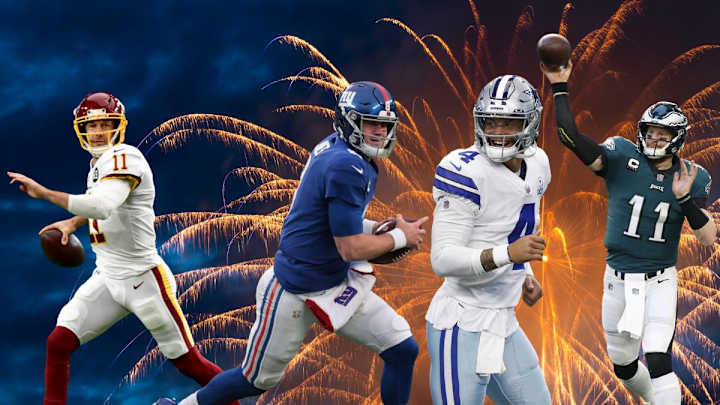
The latest word on the 2021 NFL salary cap figure, according to ESPN’s Adam Schefter, is the 2021 NFL salary cap will be somewhere in the $180-$191 million range.
Of course, that’s still subject to change, but Schefter’s report is yet the latest that suggests the salary cap isn’t going to be as bad as first thought, as in the $175 million floor.
Though the NFL’s salary cap is not expected to be officially set until next month, league sources believe it will be roughly $180-$181 million. Throughout the past season, many expected it to be around $175 million, but it now is projected to come in slightly higher, per sources.
— Adam Schefter (@AdamSchefter) February 7, 2021
That said, even if the cap comes in at $181 million, that’s still a $17.2 million projected decrease from last year’s cap.
For those not aware, NFL teams typically structure player contracts based on projected cap increases several years out.
All of that means several teams around the league will need to be creative in cuts, restructures, and extensions not only to fit under the salary cap but to leave themselves room to finagle the addition of new players--free agents and draft picks.
Using the $180.5 million projected by Over the Cap as the basis, let’s take a quick spin around the NFC East to see where each team stands, what they might have to do, and how that all relates to their needs.
(All figures are from Over the Cap unless otherwise noted.)
Dallas Cowboys
Current Cap Liabilities: $178,456,200
Dead Money: $ 9,082,046
Estimated Cap Space: $18,405,193 million (12th most in the league)
The Cowboys' biggest looming issue is what to do with quarterback Dak Prescott, who played on the exclusive franchise tag last year.
A second tag for Prescott, who by the way is recovering from a broken ankle, would cost the Cowboys around $37.7 million according to Spotrac, so it's imperative that if the Cowboys want Prescott to continue leading their franchise, they get that number down by way of a long-term deal.
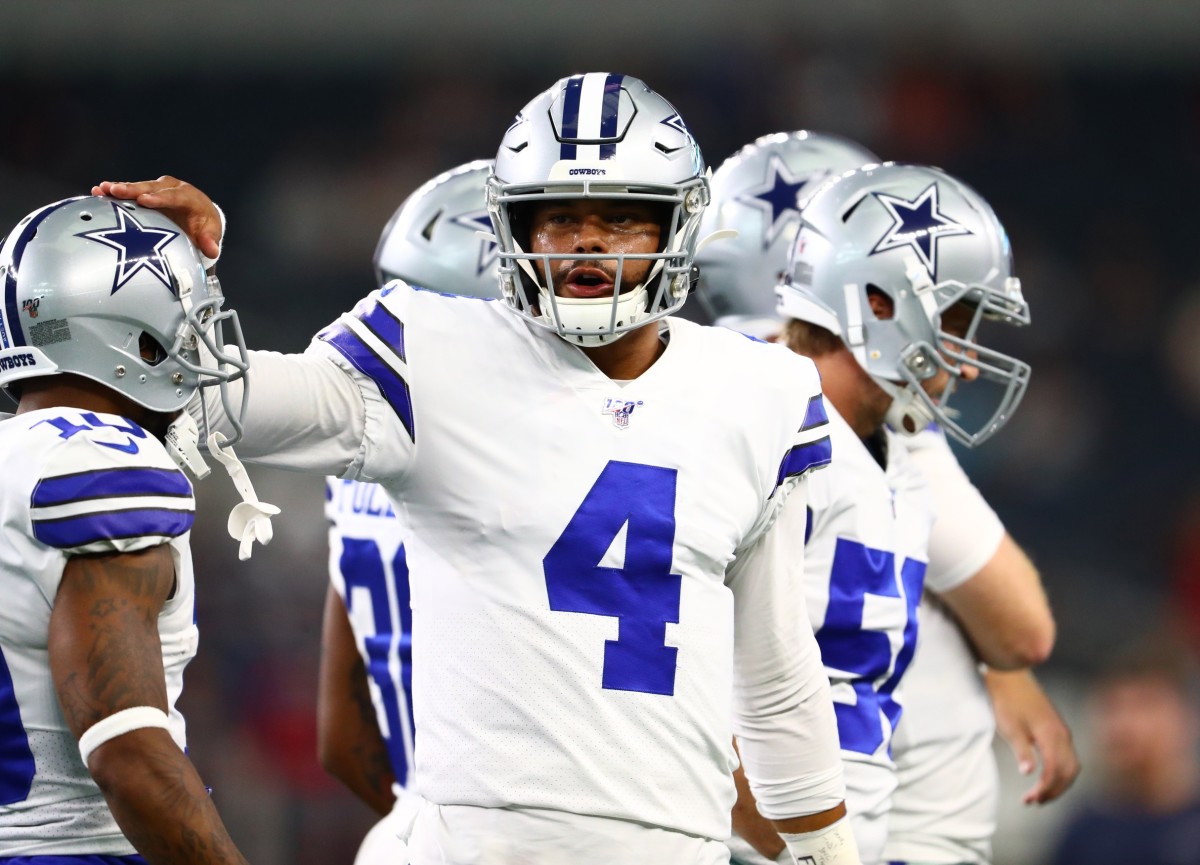
As Spotrac also noted, Prescott's camp might be waiting to see what happens with any negotiations between the Browns and Baker Mayfield.
The sooner that deal gets done to provide a framework, the better for the Cowboys, though owner/general manager Jerry Jones might try to be proactive in getting Prescott done and not waiting on the Browns and Mayfield.
But more importantly, the Cowboys, at least right now, don't have the cash for Prescott's projected tag.
Their top five highest-paid players include edge Demarcus Lawrence ($25 million), receiver Amari Cooper ($22 million), guard Zack Martin ($17 million), tackle Tyron Smith (14.025 million), and running back Ezekiel Elliott ($13.7 million).
Three of those five players—Lawrence ($17 million), Cooper ($22 million), and Elliott ($9.6 million) have guaranteed money due this year, so any contract restructuring would have to ensure that they receive at least the guaranteed amount for 2021.
Cowboys Maven Mike Fisher recently penned a piece suggesting the Cowboys might be forced to move on from Prescott and turn to the draft for their next quarterback. Given their salary cap situation, this wouldn't be a surprise as the Cowboys are squeezed.
Washington Football Team
Current Cap Liabilities: 152,654,002
Dead Money: $4,864,097
Estimated Cap Space: $38,812,074 (fifth-most n the league)
Brace yourselves, Giants fans. You're probably going to see the Washington Football Team projected as the preseason NFC East winner and a playoff contender this coming year if not beyond, and that's not just because Washington is the defending NFC East champion.
The Football Team has the healthiest cap situation of the four NFC East teams, and they could potentially clear more space with a few moves, starting with current quarterback Alex Smith, who, if he retires pre- June 1, would add another $14.7 million to their pot.
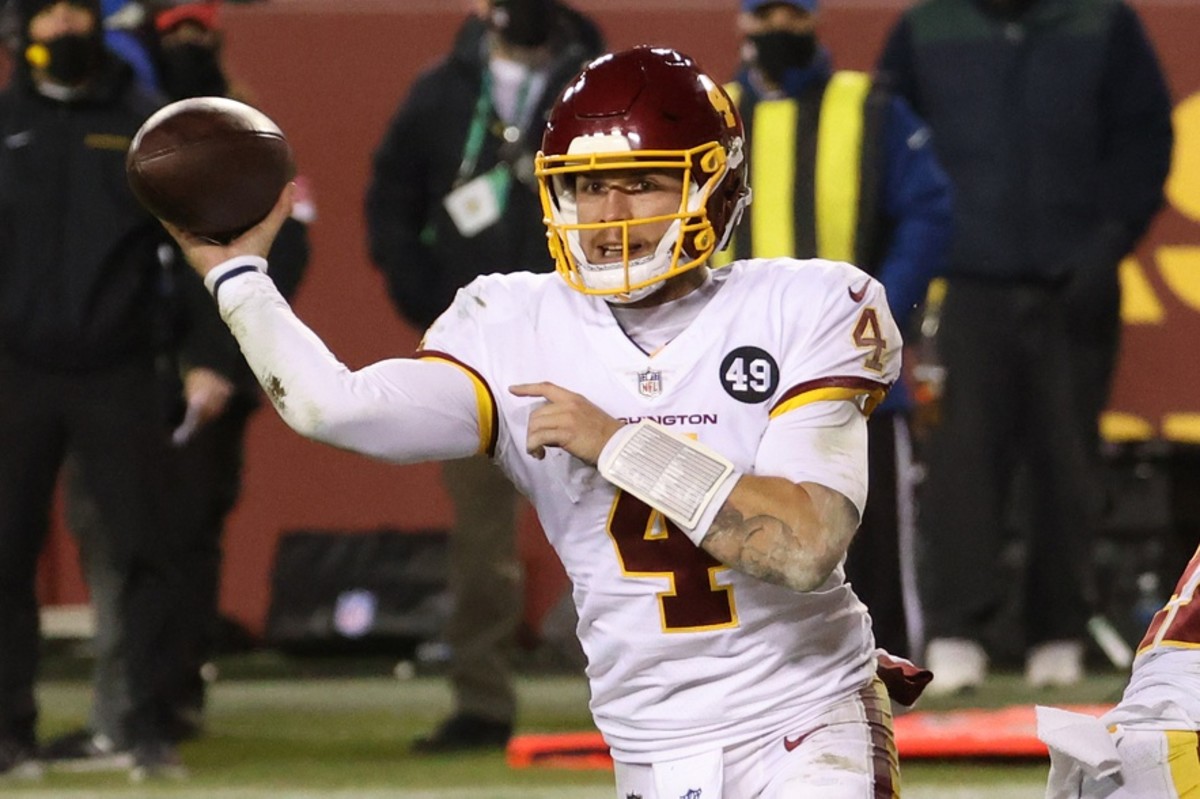
That's plenty of money for the Football team to address their quarterback situation. Recently, they signed Taylor Heinicke to a two-year $4.75 million deal that includes $1.5M guaranteed to bring his 2021 cap hit to a reasonable $1,593,750.
There has also been talk that Washington, who drafts 19th overall, might look to acquire Sam Darnold from the Jets in a trade if he's made available. Truth be told, if Smith retires, expect the Football Team to be competitive for just about any quarterback made available in a trade, assuming that the other team's asking price isn't ridiculous.
The Football Team has the cap space to bring a quarterback into the fold while still addressing some of its other needs like tackle and receiver and taking care of guard Brandon Scherff, corner Ronald Darby, and linebacker Kevin Pierre-Louis.
New York Giants
Current Cap Liabilities: $180,829,762
Dead Money: $3,136,160
Estimated Cap Space: $ $1,335,453 (20th most in the league)
The Giants aren't exactly in dire straights, as they're projected to execute several salary cap-related cuts that could clear as much as $41.6 million by the time the off-season ends.
The Giants, unlike their other three division opponents, also aren't in bad shape regarding their quarterback situation. Regardless of what you think of Daniel Jones, he currently gives the Giants the most stable situation at a cost that isn't choking their salary cap.
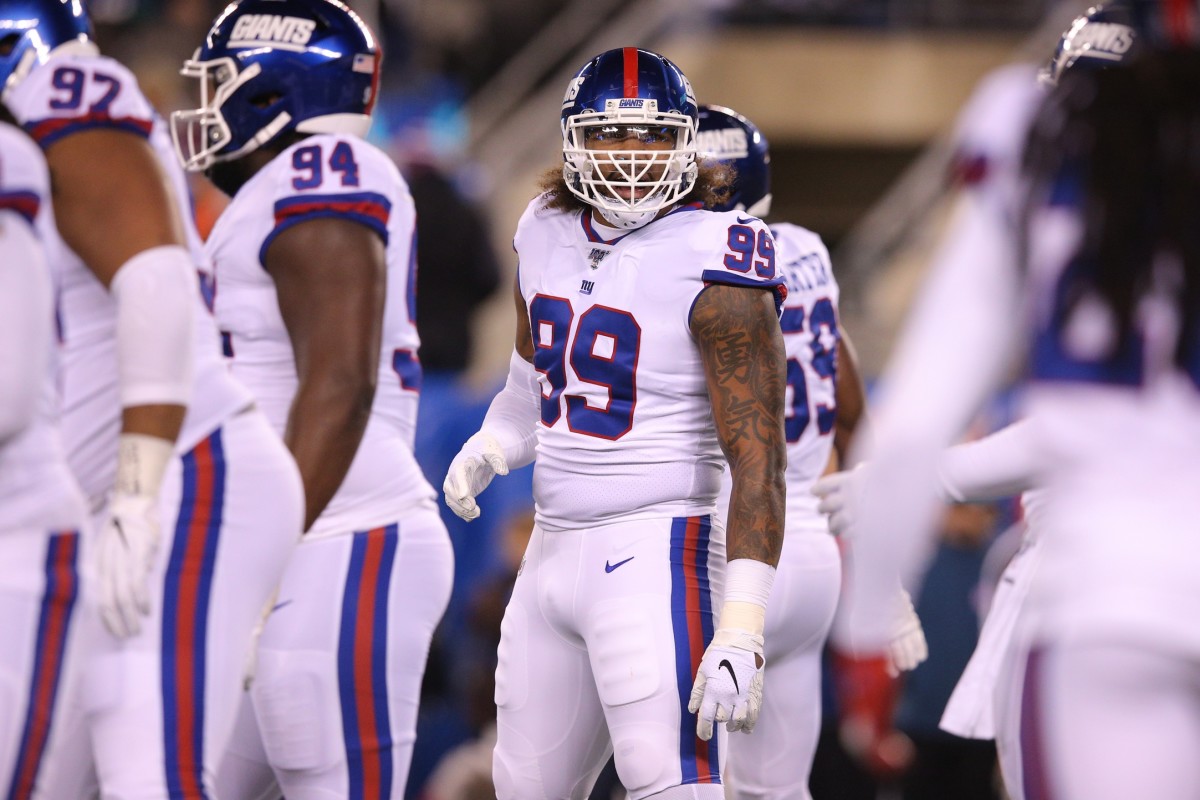
That said, something will need to get done with defensive tackle Leonard Williams, who is expected to get the franchise tag when that window opens.
As this would be his second tag in as many years, Williams would be due closer to $20 million thanks to the clause stating that he receive 120% of his previous year's salary if that's higher than the established franchise tag.
Unlike last year, when there were a few issues to be ironed out between both sides before agreeing to a long-term deal, I think this year the Giants and Williams will get a long-term deal done (though I don't expect it to be done before the official start of free agency).
Once the Williams deal does get done, and the Giants make their projected salary cap cuts, their needs include a No. 1 receiver and a pass rusher.
If I had to guess general manager Dave Gettleman's approach, I think he'll sign a lower cost receiver and draft one from yet another historically deep draft class.
I keep going back to Carolina's Curtis Samuel, who, by the way, I also suspect Washington will try to lure since Ron Rivera was Samuel's head coach with the Panthers.
Samuel, as some have pointed out, is more of a slot receiver. But if the Giants are planning to move on from Golden Tate, who has been their primary slot receiver since signing with the Giants, then Samuel would be an upgrade, and would allow the Giants to leave Sterling Shepard and Darius Slayton could be the Giants' outside receivers, for the time being, depending on what they can find in the draft.)
Edge rusher is another story. I haven't looked at the rest of the league's cap situations in detail, but I might find it hard to believe that every single legitimate veteran pass rusher is going to be slapped with the franchise tag, as was the case last year.
If that comes to fruition, we're potentially looking at a seller's market since pass rushers are always in demand.
And with this year's draft class not boasting a lot of can't-miss depth, if the Giants don't invest in a veteran pass rusher, I could see them going that route instead of at No. 11 in the draft and punting the receiver need to Day 2.
Philadelphia Eagles
Current Cap Liabilities: $251,766,582
Dead Money: $539,789
Estimated Cap Space: -$49,049,596) (31st in the league)
If Eagles general manager Howie Roseman somehow manages to pull the franchise out of the financial mess he's largely responsible for creating, then cancel all NFL Executive of the Year voting for the next decade and give the man the trophy right now.
The Eagles are deep in the red as far as cap space goes, only "bested" by the Saints for worst cap shape in the league (and that's with the $22,756,775 in carryover from 2020 they're bringing).
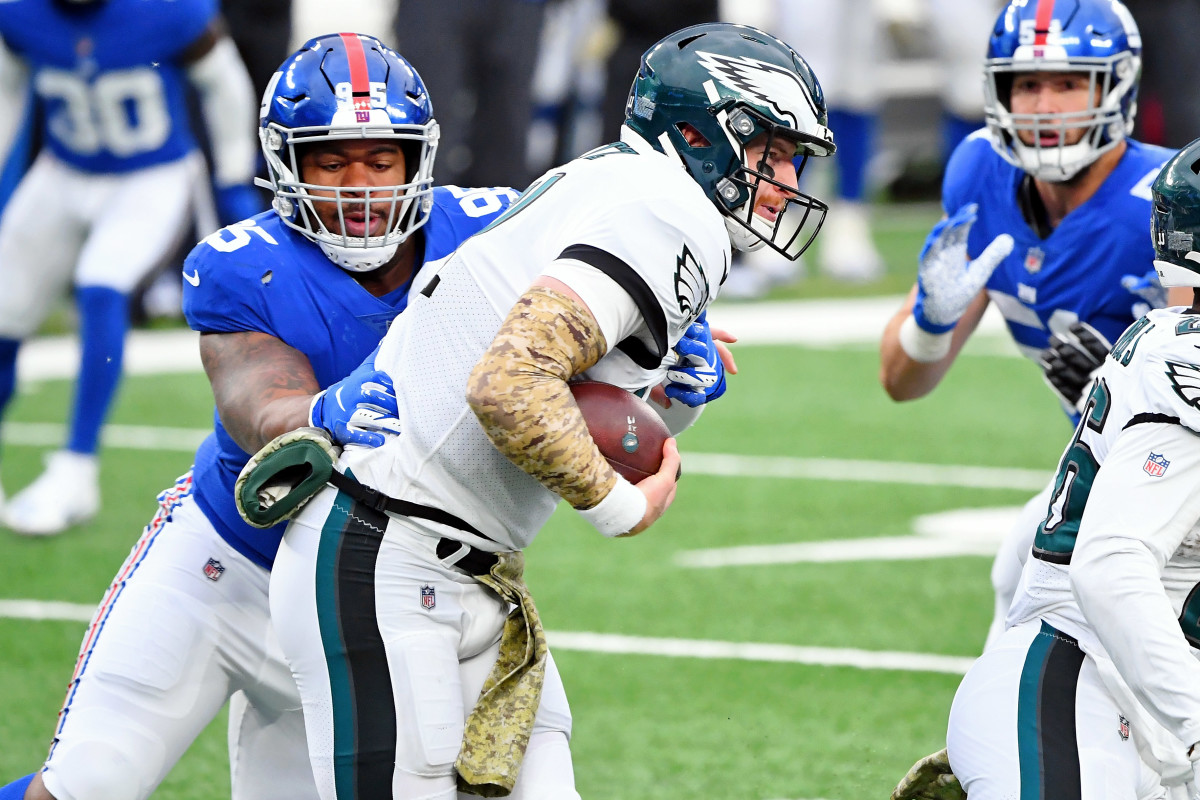
The Eagles currently have a whopping ten players with cap figures of $10 million or more (talk about being top-heavy!). One of those ten is a (reportedly) unhappy quarterback in Carson Wentz, who is in the first year of the big money part of his new contract and whose exit, if it happens, is going to be tricky cap-wise.
Behind Wentz are Fletcher Cox ($23.879 million) and Brandon Graham ($17.928 million). Given those two contracts' structures, the Eagles' only option appears to be restructuring, as they have already done with receiver Alshon Jeffrey and defensive tackle Malik Jackson.
But restructuring too many contracts can lead a team down a dangerous path. Whenever a restructure is done, a team is kicking the can down the road, as while it will gain short-term savings, the dead money will pile up, which can hamstring a team from being competitive in free agency.
This is why when Giants general manager Dave Gettleman came on board in 2018, he chose to rip the bandage off several bloated contracts and just eat the dead money rather than kick the can down the road in what would become an endless cycle.
The strategy worked as the Giants’ cap situation got better, and when combined with a different approach in how they structured free-agent contracts, they improved their salary cap health.
The bottom line is the Eagles are a mess on the business end, as it's clear they were counting heavily on future caps taking big jumps. Perhaps Roseman pulls off the impossible by clearing cap space and being competitive in free agency, but he's got a lot of work ahead of him and a lot of tough decisions to make if he's to get the Eagles back on track.
What's next for the Giants this off-season? Sign up for our FREE newsletter for all the latest, and be sure to follow and like us on Facebook. Submit your questions for our mailbag. And don't forget to check out the daily LockedOn Giants podcast, also available for subscription wherever you find podcasts.
